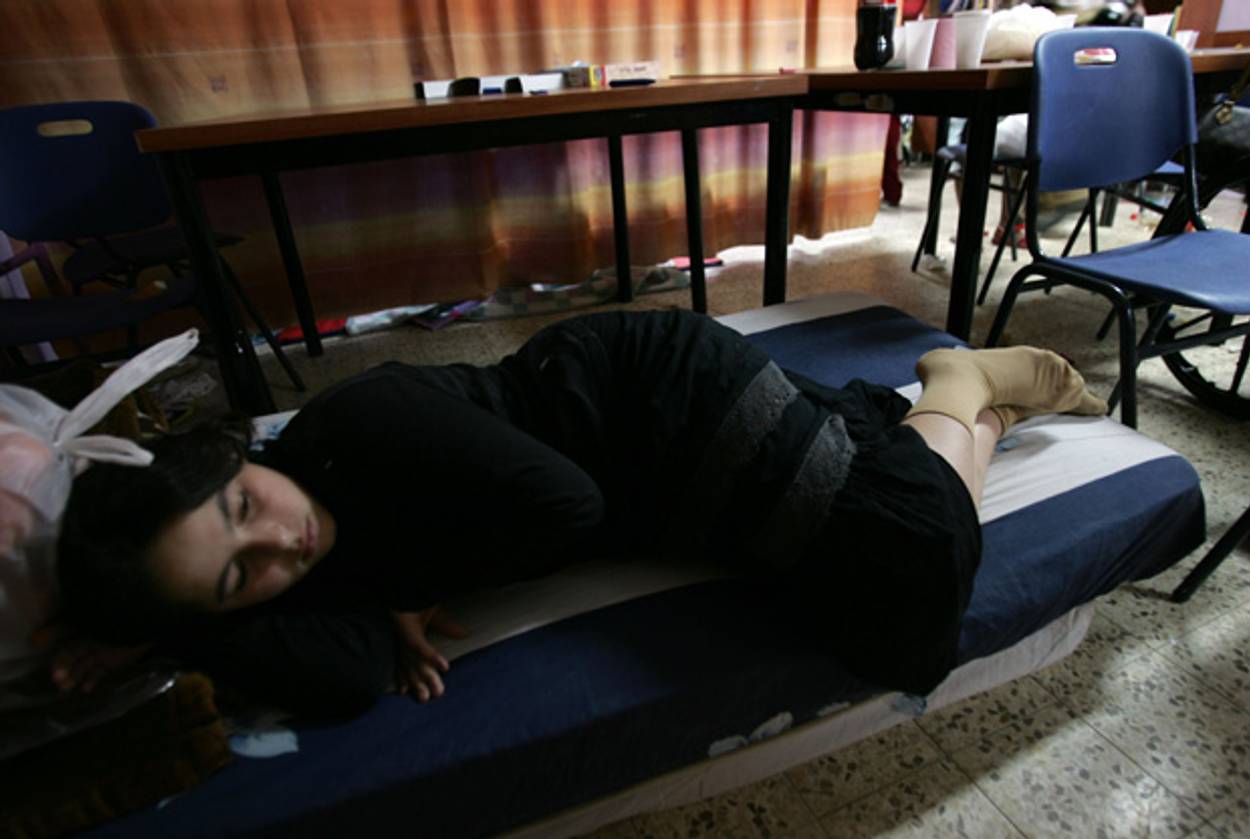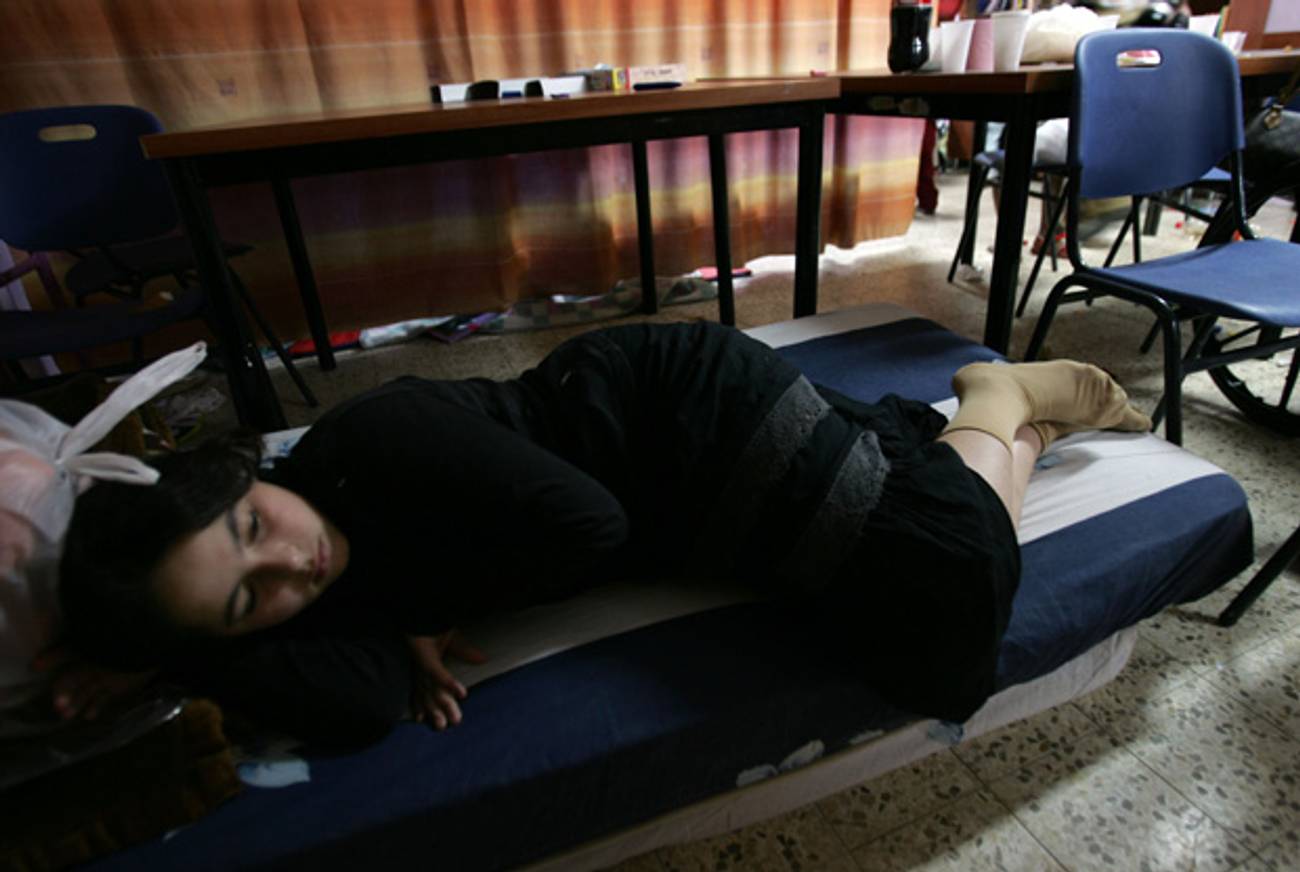Organizing Life Around Hamas
In 2007, I traveled to Sderot to make a film. Months later, I made it my home—and Gaza my neighbor.




Before the IDF had a Facebook page with exciting info-graphics and sleek videos, I showed up in a small town that nobody I knew had ever heard of called Sderot.
An Israeli friend had sent me emails describing a small Negev town that was being hit by 50 rockets a day. When I read her messages in my Los Angeles living room, I naively assumed that Sderot was some disputed settlement in Gaza; I quickly learned it was well within the green line and had been attacked for seven years. More research uncovered Sderot’s music scene: The city had produced a disproportionate amount of famous Israeli rock bands—a Jewish Liverpool. As a documentary filmmaker looking for an angle, I had found it in the combination of rockers and rockets. So, I showed up in July 2007 and began to shoot my movie.
It’s now five years later, and my life has become inextricably linked to Sderot. My daughter is Israeli—and so am I.
***
My first week in Sderot, I received explicit instructions: Upon entering the city, open your car window and turn down the stereo so you can hear the tzeva adom, or red alert. Take off your seatbelt, and be ready to run, because when the alarm sounds, you have only 15 seconds to get to shelter. They didn’t tell me that sometimes its less than 15 seconds—and sometimes the alarm doesn’t sound at all.
I heard my first tzeva adom while staying across the road from Sderot, at Kibbutz Nir Am, on the Gaza border. I awoke to the strange sounding alarm, fumbled for the key, and opened the door. I heard a loud and close boom before I could make it across the lawn to the little bomb shelter with its bright blue steel door. More explosions followed.
As a filmmaker, I noticed the small, strange little details. I laughed at a huge billboard advertising air-conditioning units for bomb shelters. I marveled at the dogs who could hear the alarm before people and ran into the bomb shelter with their tails between their legs.
At first, I commuted from L.A. to Sderot. But at a certain point, I realized I would never truly understand what Sderotis go through unless I lived there. So, in December 2007 I rented a huge house for next to nothing and moved in.
My daily routine was organized by the fact that Hamas was our next-door neighbor. My alarm clock was the tzeva adom that went off every morning at 6. I would run to the shelter, wait for the boom, and go back to bed for another hour or so, when there would be another one. This happened on and off between 6 and 8 in the morning most days. Though there could be a rocket at noon, it rarely happened. Rockets were reserved for times when kids are on their way to school, or playtime, around 4 or 5 in the early evening.
I was one of the lucky ones—I had a shelter in my house that doubled as a laundry room. Others were others far worse off. Apartment-building residents couldn’t get to the bottom floor in time. Teenage musicians I filmed demonstrated their hiding places under stairwells, under beds, and in closets.
Qassam rockets started as an inconvenience. What were the chances that this one small rocket would hit me? All of that changed one foggy Saturday night, when the tzeva adom system didn’t work. A Qassam landed in the street a couple of blocks from my house, critically wounding two brothers, aged 8 and 18. The 8-year-old, Osher Twito, lost his leg. It’s not the size of the rockets. It’s the shrapnel and ball-bearings inside, which become like thousands of bullets flying through the air outward from the point of impact.
As the months of filming went on, I fell in love with Avi Vaknin, a rock musician and Sderot native who was working with kids in a bomb-shelter-turned-music-club called Sderock. In September 2008, we got married in our backyard—the first wedding held in the town in over four years. (Most residents, understandably, held their celebrations in other towns and cities for fear of a random rocket ruining their event.)
Many members of Avi’s family have been touched by Hamas’ terror. My nephew, Lidor, lost his Bnei Akiva counselor, Ella Abukasis, to a Qassam attack in 2004. Ella, 17, heard the whistle of an incoming Qassam and threw her body over her little brother, saving his life. She suffered shrapnel wounds to her head and died a few days later. Once Lidor’s little sister, Atara, was showing me her class photo from kindergarten. “There is my friend, Afik,” she said, “May his memory be a blessing.”
***
Over the past three years, the Israeli government has spent more than half a billion shekels to turn Sderot into a fortress. Every apartment building unit and private home has gotten a new bomb shelter. I wish I had filmed the city from the air, because the landscape has changed entirely. Brand new four-story columns are built onto older apartment projects. Five new schools have been built, and the buildings are bunkers, complete with shatter-proof glass and steel windows that can be closed at a second’s notice. As the rocket fire has expanded to an ever-larger area, especially in the past week, Sderot somehow seems less scary than everywhere else. What about the towns that get hit by Grad rockets, twice the size and range of Qassams? Over the last couple years, I’ve begun worry when we need to go to Netivot, Ashdod, Ashkelon … where would we run when the siren goes off?
***
Avi and I live in Tel Aviv now, but we come to Sderot almost every weekend to spend Shabbat with his family. I often wonder what will happen if there is an incoming rocket while we are driving? How will we hear the alarm in the car? On the open road, where would we go? There was a radio station that once broadcast the alarms, but as far as I know it’s only operational during a major escalation.
Sderot has become a symbol of a country that has had to adapt. And these days, it’s not hard to imagine that the rest of the country will have to follow Sderot’s lead. A few months ago, as I worked on my film with my editor in Tel Aviv, he turned to me and said, “I live in a really old apartment building. The walls are like paper. If anything happens here, I’m finished.” Sometimes I just step back and think to myself: Can you imagine having this conversation in L.A.?
***
Like this article? Sign up for our Daily Digest to get Tablet Magazine’s new content in your inbox each morning.
Laura Bialis is a documentary filmmaker. She produced and directed Refusnik, a critically acclaimed documentary about the movement to free Soviet Jewry, and is currently completing Rock in the Red Zone, a film about life and music in Sderot, Israel.
Laura Bialis is a documentary filmmaker. She produced and directed Refusnik, a critically acclaimed documentary about the movement to free Soviet Jewry, and is currently completing Rock in the Red Zone, a film about life and music in Sderot, Israel.